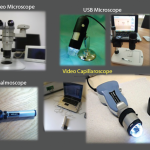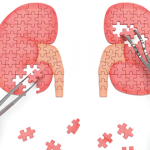Why do these different deposits matter? “Clinical findings correlate with patterns of injury, and even the best clinicians can’t predict lupus nephritis class based on clinical picture alone,” Dr. Fogo explained. “That’s why we do biopsies. Mesangial deposits don’t cause a lot of problems—just some minor proteinuria and hematuria. But with endocapillary injury, you see hematuria, loss of glomerular filtration rate and proteinuria. Remember, subendothelial deposits are bad. With epithelial injury, you see nephrotic range proteinuria due to irritation of the podocytes.”2
Other Lupus Kidney Diseases
Dr. Fogo then turned her attention to other types of kidney disease in SLE. “There’s more than just lupus nephritis, and a biopsy is essential for a specific diagnosis, especially given the therapeutic implications,” she said.
Example: Podocytopathies distinct from lupus nephritis class V may cause proteinuria. Both minimal-change, disease-like lesions and collapsing lesions, such as those seen in HIV, can occur in SLE. Vascular lesions may range from bland deposits that don’t affect prognosis to more severe lesions with poor prognosis (e.g., lupus vasculopathy, lupus vasculitis and thrombotic microangiopathies).
‘Lupus nephritis class numbers aren’t sequential. Patients can start at any one number &, spontaneously or in response to an intervention, change to another—for better or for worse. [Patients with] lupus nephritis can also relapse [to] any form.’ —Dr. Fogo
Crescents
To talk about crescents, Dr. Fogo shared Edvard Munch’s painting The Scream. We know crescents are bad, but what else does a renal pathologist want us to know about them?
“First of all, crescents aren’t a disease,” Dr. Fogo said. “They’re a pattern of severe injury that happens when you break the capillary wall. Clinically, the syndrome is rapidly progressive glomerulonephritis, which is also not a disease. The indication for biopsy should never be to rule out rapidly progressive glomerulonephritis because that doesn’t make sense. You wouldn’t order a biopsy to rule out nephrotic syndrome, would you?”
Clinicopathological correlation, serologic studies, immunofluorescence and electron microscopy are crucial to understanding the specific cause of crescents and/or rapidly progressive glomerulonephritis. When it comes to rheumatology, four major causes are on the differential: immune-complex glomerulonephritis, such as lupus nephritis; anti-glomerular basement membrane (anti-GBM) disease; pauci-immune glomerulonephritis, as seen in anti-neutrophil cytoplasmic antibody (ANCA) associated vasculitis (AAV); and IgA vasculitis.
Dr. Fogo shared pearls of wisdom specific to anti-GBM disease, a pulmonary-renal syndrome caused by autoantibodies to type IV collagen. “About 25% of anti-GBM disease patients make perinuclear-ANCAs, too,” she said. “It’s important to check ANCAs in these patients, especially if they have vasculitic skin lesions. And about 15% of anti-GBM patients are seronegative, despite linear deposition of immunoglobulin along the GBM and crescentic glomerulonephritis consistent with this diagnosis. This may be due to anti-GBM antibodies with very high affinity that are all stuck in the kidneys or unusual anti-GBM antibodies not detected by standard assays. Thus, a biopsy is always needed to confirm the diagnosis.”3


